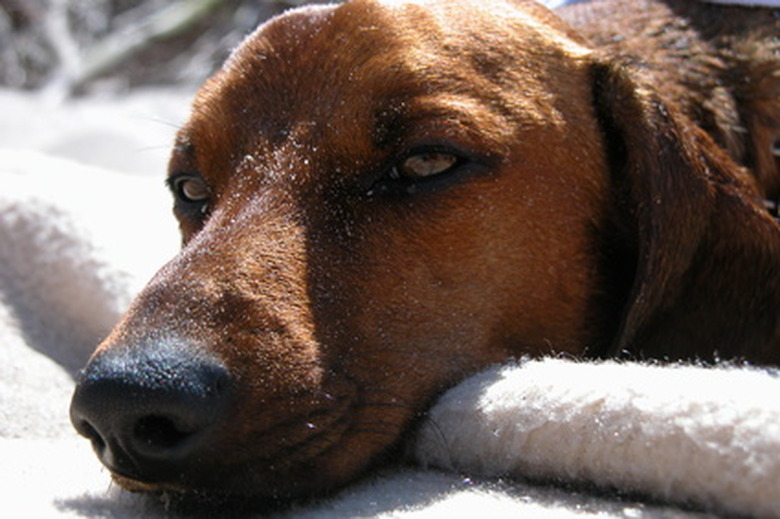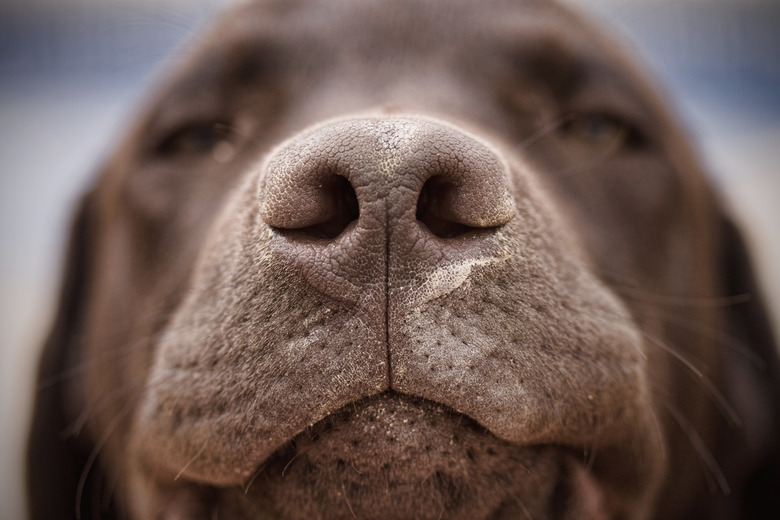How To Clean Mucus On A Dog
It isn't uncommon to see some mucus around your dog's eyes and maybe even some in his nose. Often, this is a normal discharge, but it can also be a sign of allergies or another medical condition. Keep your dog healthy and comfortable by cleaning this mucus with a soft cloth or a nasal aspirator for dogs. For any excessive or abnormal discharge, be sure to get your pup to the vet to diagnose and treat the underlying cause.
Eye mucus in dogs
Eye mucus in dogs
Normal eye mucus occurs when dust and other particles in the air accumulate in the mucus cells in your dog's eyes, resulting in a gray discharge. Abnormal discharge has several possible causes, including eye infections, inflammation, dry eye, or injury. Symptoms that your dog may need a vet to diagnose the problem and offer additional treatment include a change in the amount or color of the discharge, yellow or green discharge, squinting, cloudy eyes, swelling around the eyes, and other signs of illness.
To clean normal eye discharge, use a clean and damp tissue to wipe the eyes. A soft cloth or cotton ball will also work for this. Be sure to administer any additional medications and eye drops prescribed by your veterinarian.
Nasal mucus in dogs
Nasal mucus in dogs
Nasal mucus and congestion also have many potential causes. It may simply be caused by seasonal allergies, but if the nasal discharge and congestion last for more than a day, your dog may need veterinary attention. Some other potential causes include a foreign body in the nasal passage, dental problems, or an illness, such as cold, flu, or distemper.
Treatment for nasal discharge depends on the diagnosis. If it is caused by a foreign body, simply removing the object may resolve the issue. In other cases, antibiotics or allergy medications may be necessary. Be sure to consult your vet before administering any medication.
Mucus discharge from the nose is a normal occurrence for some breeds due to their genetics. It is particularly common in dogs with flat faces, such as bulldogs and pugs, due to the shape of their airway. You can manage this by regularly clearing mucus from your dog's nose, but in severe cases, surgery may be necessary to allow your dog to breathe freely.
Clean your dog's nose
Clean your dog's nose
Your dog's nose is a sensitive area, so be very gentle when cleaning the mucus. Use a moist wipe or soft cloth to clean the mucus. If there is mucus inside your dog's nostrils, you can massage the upper part of the nose with a warm cloth. This can help the mucus to drain so that you can wipe it away.
Dry mucus can be more difficult to remove. If the moist cloth isn't working, you can try putting a couple of drops of saline solution on the nose before using a nasal aspirator for dogs or a damp cloth. A Q-tip may also work to remove dry mucus around the nostril, but don't use this method if your dog isn't staying still. Don't insert the Q-tip into the nostril.
Using a nasal aspirator for dogs
Using a
nasal aspirator for dogs
Alternatively, you can use a nasal aspirator for dogs or babies to suck the mucus out of the nose. Take care not to hurt your dog when using this method. If he is struggling, ask someone to help you hold him during the process or use the massage method to draw out the mucus. Running a humidifier can also help to loosen mucus and clear congestion.

